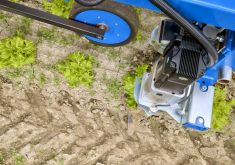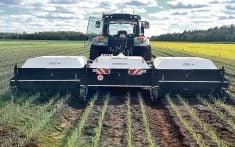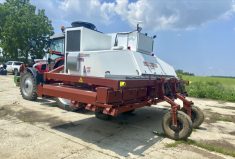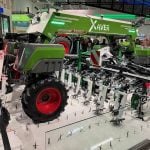Glacier FarmMedia – Advanced spot-spraying technology has become the hottest topic in application equipment recently, with numerous announcements from brands offering green-on-brown systems or talking about future green-on-green capability.
Green-on-green refers to the ability of a sophisticated artificial intelligence-based software system to identify unwanted weeds in green, growing crops and spot spray them. Green-on-brown identifies weeds in fallow fields.
Speaking during a live-streamed press conference held in Paris, France, last November, executives from Exxact Robotics and Agrifac sprayers, which are European-based firms, revealed they will be among the first out of the starting gate with a commercial green-on-green system integrated into a production sprayer.
Read Also
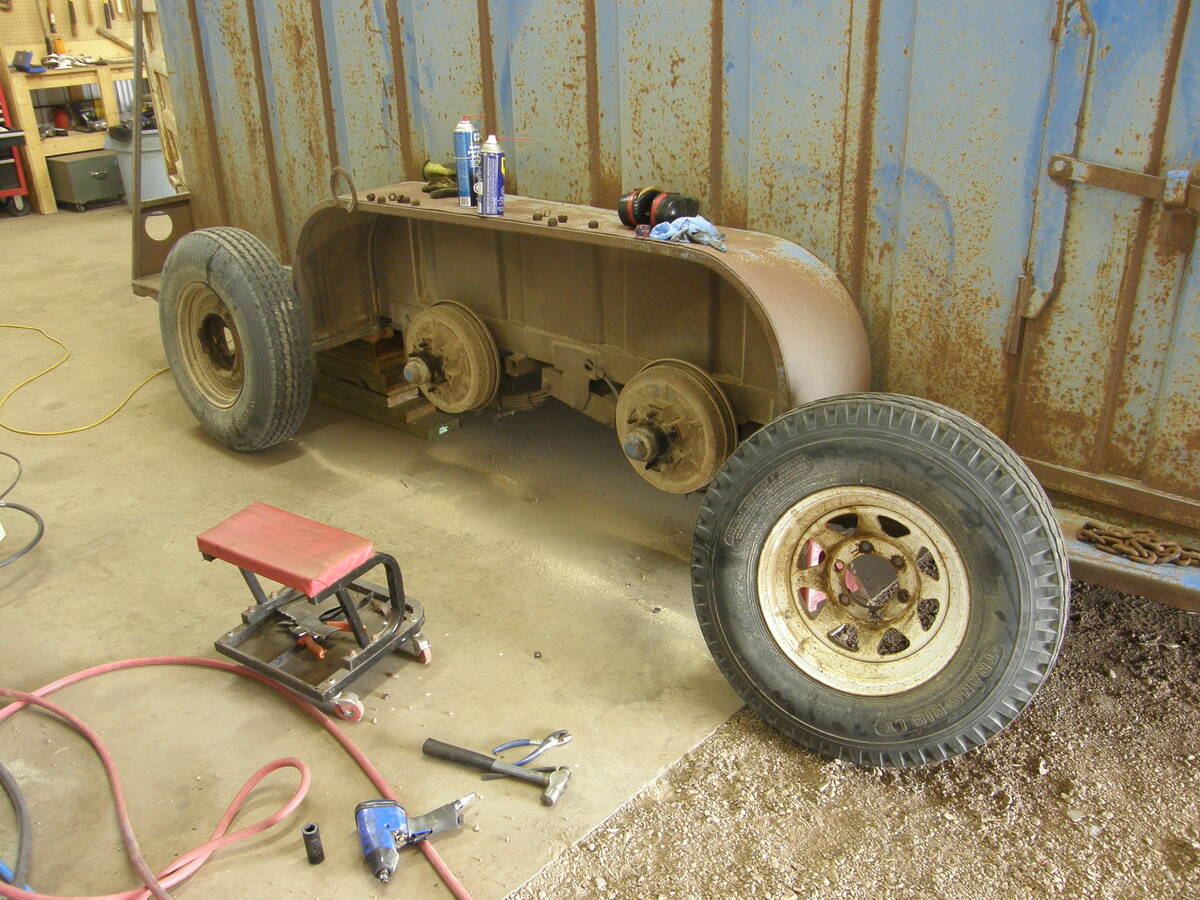
How to overhaul electric trailer brakes
Let’s look at what you’ll find when you pull the wheel hubs off your livestock trailer, and what you need to consider to keep those electrical brakes in good working condition.
Growers will be able to purchase an Agrifac sprayer in 2022 equipped with Exxact Robotics’ 3S green-on-green spot-spraying system.
Both Agrifac and Exxact Robotics are owned by parent company Exel Industries. And although the 3S system will debut on Agrifac machines, it will eventually be available on other sprayer brands in the Exel Industries stable, including two brand names familiar to North American farmers — Apache and Hardi.
The 3S system has been in field trials for five years and has completed well over 200,000 acres of testing so far, according to Colin Chaballier, CEO of Exxact Robotics. The initial 3S version will work with regular herbicides in weed control passes and it can work in a variety of crop types, including corn and cereals.
But the company expects to expand that in-crop capability to other spraying operations as well, including nitrogen fertilizer, fungicides and insecticides.
“We’re starting with herbicides,” said Chaballier. “Herbicide modulation will be available for 2022 in Agrifac sprayers. Then we’ll follow up with nitrogen and fungicide modulation and insecticide. We needed to prioritize and to go step by step.”

The company’s commercialization timeline, revealed during the press event, indicates a fertilizer application system will hit the market in 2024 and another for fungicides the following year. A system for pesticide application will follow in 2026, assuming everything goes according to plan.
The system relies on input from camera sensors developed exclusively by Exxact Robotics that tracks what is just ahead of the boom. Their data is fed into an onboard computer, which evaluates the images and determines what types of plants the camera is looking at.
“With all of our experience in different countries, we know just what kind of camera we need, and our team has developed the perfect solution,” Chaballier said.
“AI (artificial intelligence) is the starting point. We need AI to recognize weeds, to recognize nitrogen deficiencies and to have specific models for weed detection and funguses, etc. And we can’t develop this type of technology without agronomic expertise as well.”
Thus, agronomists were part of the R&D team.
Agrifac sprayers can be equipped with two versions of the 3S system, either a low- or high-density setup. The low-density model has one camera sensor mounted every three metres along the boom, which will allow for sectional spraying. The high-density version uses one sensor every metre and is the high-end version of the system.
“This is a premium setup,” said Chaballier. “It’s better for row (crops). It has better accuracy, better resolution on the images, so the algorithm can work better. And you have better shade management. We know in some fields you may have shade problems that prevent the algorithm from working perfectly.”
The company expects the low-density version to become the most common.
Spot spraying reduces herbicide use and saves growers significant costs. It also keeps unnecessary chemicals off the crop and reduces plant stress, minimizing post-application growth setbacks.
“The 3S system accommodates all spraying needs to feed or protect a crop almost to the plant level,” said Roeland Coopman, chief commercial officer at Agrifac.
“When a farmer sprays his crop, a plant can go into shock for a week or even 10 days. When we are able with the 3S technology to (properly) dose or even not spray, we are able to broaden the growing days of crops. This way of working will increase yields. It will also reduce the cost of chemicals.”
How much will the 3S system add to the cost of a new Agrifac sprayer? No price has been announced yet, but Coopman says the amount paid by those who participated in the pre-production trials proved to be insignificant compared with the savings producers saw when using it.
“In the last five years, we have activated several of these camera systems and cost of the system was too low because the return on investment was so high that they (the purchasers) earned back (the cost of) the system after spraying runs, not spraying seasons. The economic models show the benefits of the system just by chemical savings is enormous.”
– This article was originally published at Grainews.







